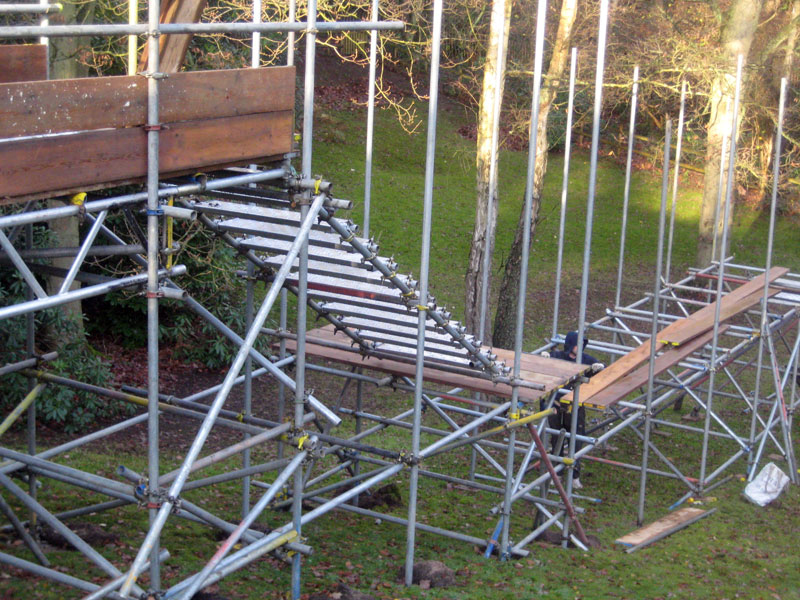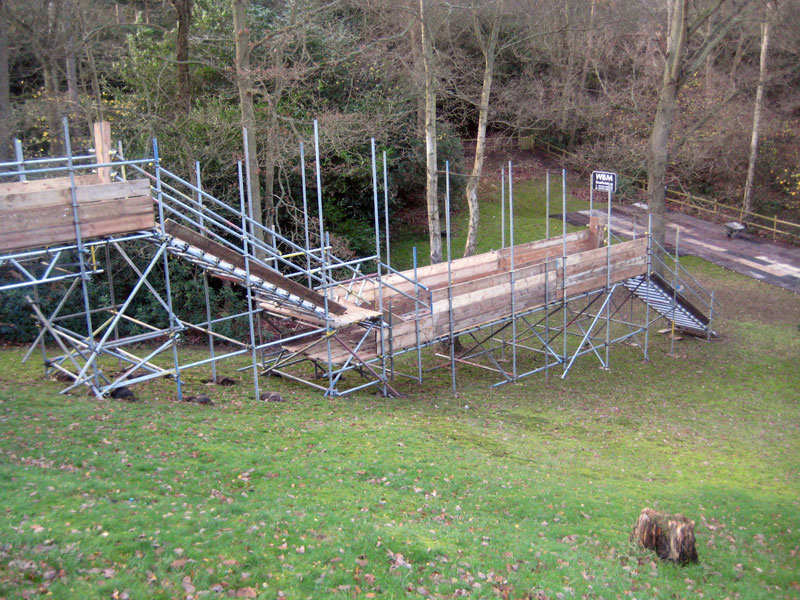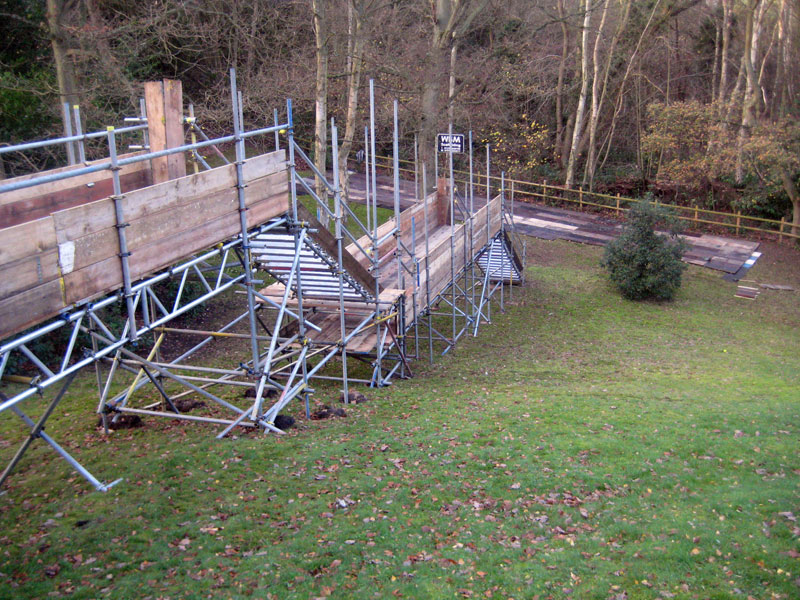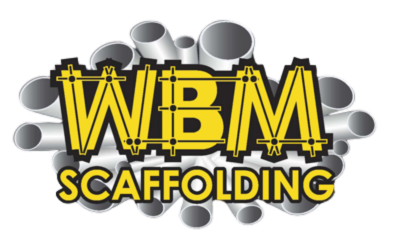When most people think of scaffolding, they picture construction sites and roofing work. But scaffolding is just as useful outside of the building trade — especially for events. Whether you’re setting up a stage, creating tiered seating, or building a viewing platform, scaffolding for events is a practical and safe solution. In this blog, we will explain how it works, what to consider, and whether it’s the right option for your event setup.
We specifically help with a lot of events staging, you can get more information from this page here.





Can Scaffolding Be Used for Events?
Yes, scaffolding can be used safely and effectively for a wide range of events. It’s a common choice for temporary structures where strength, stability, and custom design are required.
Scaffold structures are often used for:
- Concert stages
- Lighting and sound rigs
- Viewing platforms or camera towers
- Tiered spectator seating
- Backdrops or signage supports
- Temporary walkways or bridges
Scaffolding for events is not only versatile — it’s also strong enough to support equipment, performers, and even audiences when designed correctly.
How Is Event Scaffolding Different From Construction Scaffolding?
While both use the same core materials (steel tubes, boards, fixings), scaffolding for events is designed with different goals in mind.
Key differences include:
- Visual design: Event scaffolding often needs to be more discreet or finished, using covers, drapes, or branded panels.
- Layout: Instead of following a building’s shape, event scaffolding is built around the needs of a performance, audience, or camera crew.
- Access control: Platforms may include stairs, ramps, and handrails to meet safety standards for public use.
- Load planning: Calculations must allow for movement, weight from equipment or crowds, and potential weather effects if outdoors.
At WBM Scaffolding, we’ve supported temporary builds and creative structures for both public and private events. Contact us here if you’d like to discuss an event-based scaffold setup.
What Kind of Events Use Scaffold Structures?
Scaffold is a common feature at all types of events, large and small. Examples include:
- Festivals: Main stages, lighting towers, and backstage walkways
- Parades and street events: Camera positions, raised signage, or audience barriers
- Outdoor cinema nights: Screen supports and tiered viewing decks
- Weddings or private functions: Platforms for musicians or temporary marquees
- Sporting events: Commentary booths, viewing stands, or media platforms
Thanks to its modular design, scaffolding can be adapted to suit nearly any venue — even uneven ground or sloped areas.
What Safety Standards Apply?
Although event scaffolding isn’t used for construction, it still has to comply with health and safety rules. Key requirements include:
- Design approval: A scaffold design must be created or signed off by a qualified professional for complex builds.
- Risk assessments and method statements (RAMS): Essential for any public-facing scaffold installation.
- Proper assembly: All scaffold must be installed by trained operatives, usually CISRS-qualified.
- Safety features: Handrails, edge protection, access points, and anti-slip surfaces must be included where needed.
- Inspections: Event scaffolding should be checked before use, after any changes, and during the event if it spans multiple days.
Public safety is the priority. An experienced scaffolding company will manage all of these checks to make sure your event runs safely.
Do I Need Permission or a Licence?
This depends on where the event is taking place. If scaffolding will be built on public land — such as a pavement, road, or open park space — you may need a permit from the local council.
Your scaffolding provider should be able to assist with this process, including:
- Submitting risk assessments
- Demonstrating insurance cover
- Confirming traffic or pedestrian management if required
Events on private land typically don’t need council approval, but they still must meet safety standards under the Health and Safety at Work Act 1974 and related guidance.
How Much Does Event Scaffolding Cost?
Costs depend on several factors:
- Size and complexity of the structure
- Duration of the hire
- Access requirements and ground conditions
- Custom features such as branding, seating, or roof coverings
- Transport and setup time
For example, a small viewing platform may cost a few hundred pounds, while a large festival stage with multiple levels, ramps, and cover will be significantly more.
A site visit is usually the best way to get an accurate quote. Contact us here for an estimate tailored to your event.
How Long Does Setup Take?
Smaller scaffold structures can often be installed in a few hours, while more complex builds (e.g. multi-tier seating or full stages) may require 1–2 days, including inspection and sign-off.
When planning your event, make sure you allow enough time for:
- Transport and unloading
- Safe erection of the scaffold
- Any weatherproofing or decoration
- Final inspection before use
Your scaffolding provider will advise on lead times based on the structure needed.
Can the Scaffold Be Decorated or Branded?
Yes. Event scaffolding is often dressed with:
- Printed banners or mesh wraps
- Fabric covers to match the event theme
- LED lighting or sound equipment
- Sponsor branding or signage
This can be incorporated during the scaffold design process. Discuss your plans with the company early so any attachments are factored into the structure and load calculations.
To see how scaffolding can be used creatively at events, take a look at some of our recent temporary builds on Instagram.
Conclusion
Scaffolding for events is a flexible, secure, and professional way to build stages, platforms, and access systems. Whether you’re hosting a public festival or a private garden concert, scaffold structures provide the reliability and adaptability you need — especially for outdoor venues.
For guidance on design, safety, cost, or installation, speak to your local experts. We’ll help you turn your event concept into a safe and stable reality.
